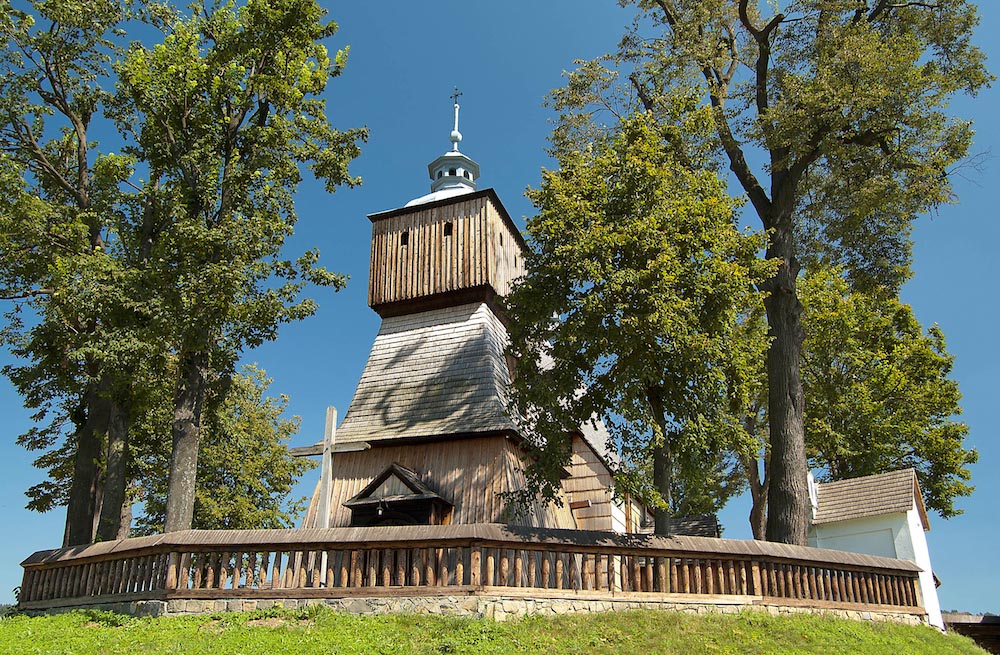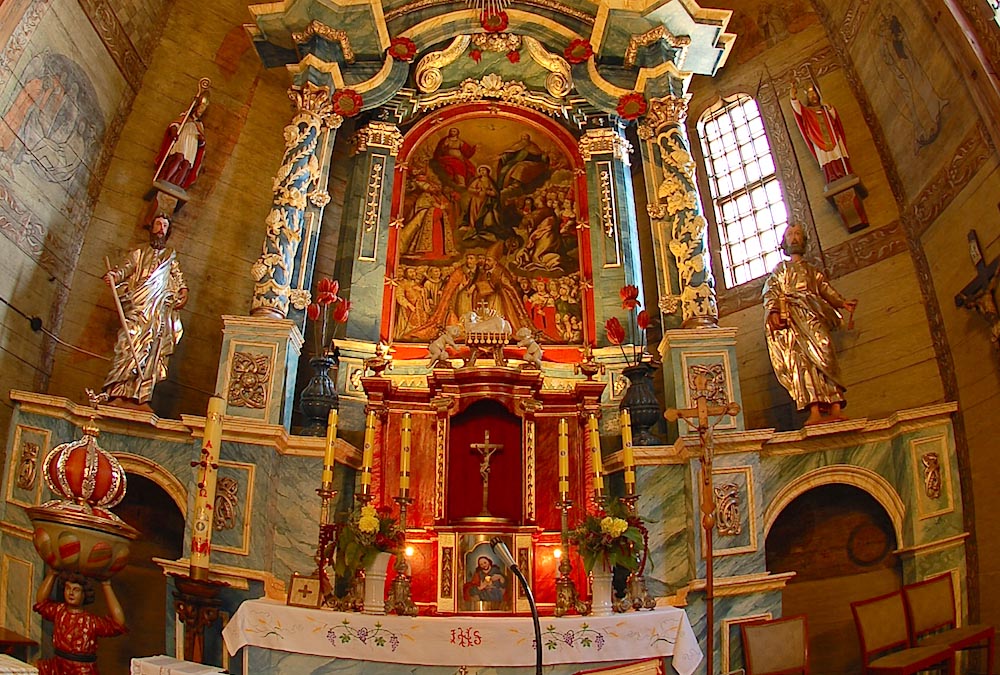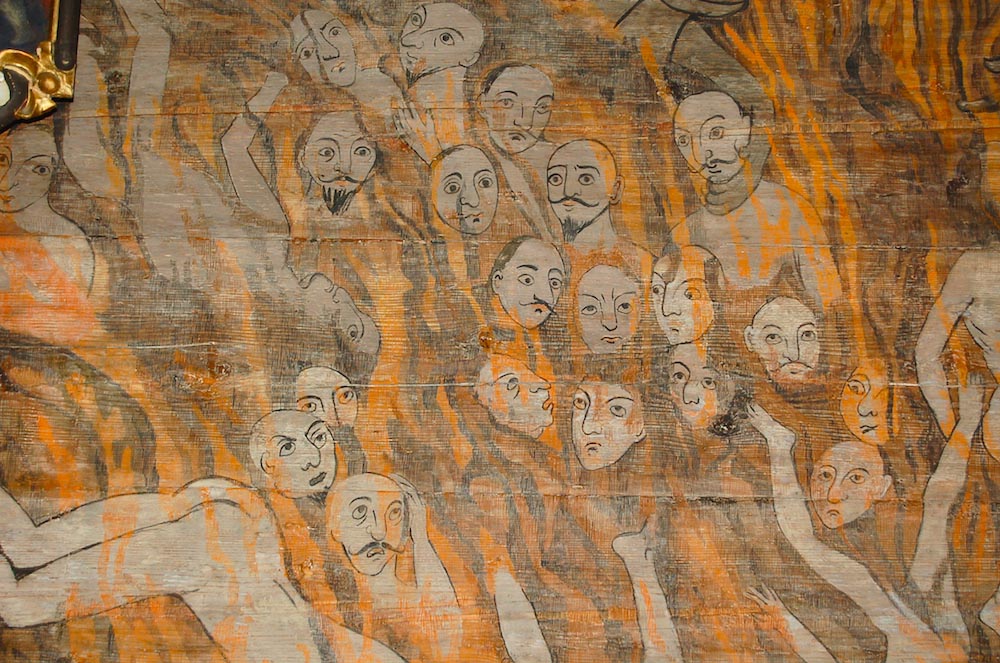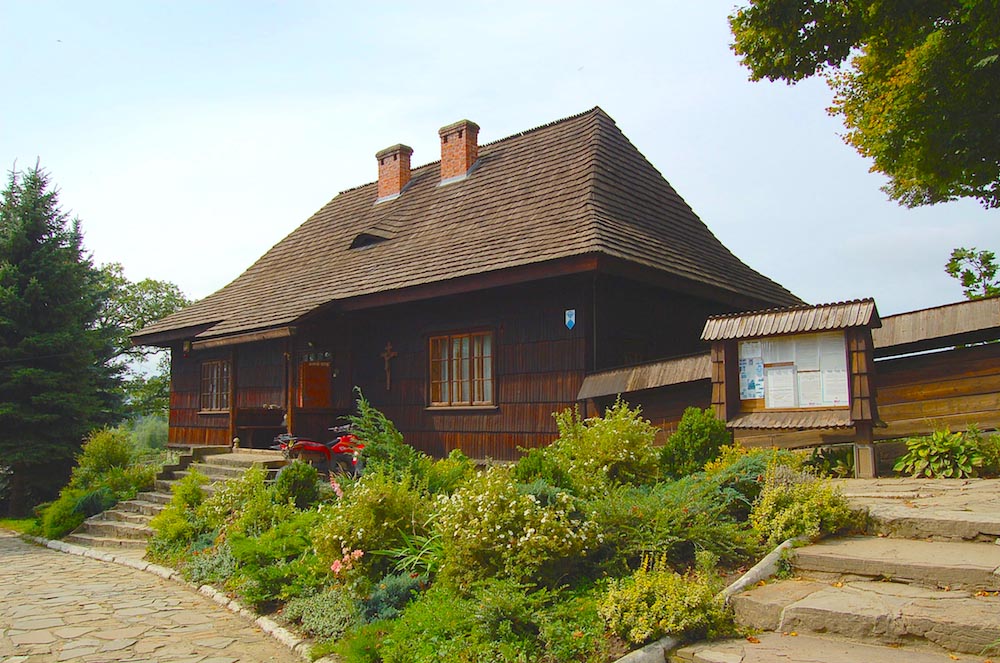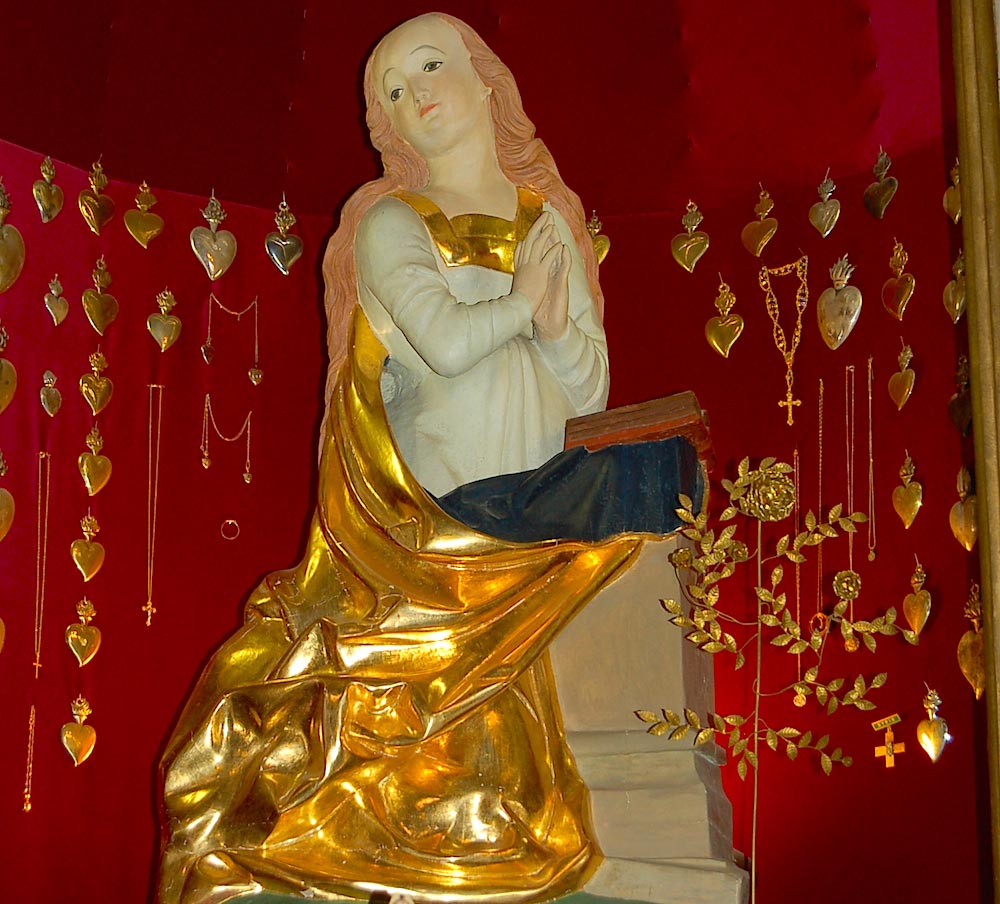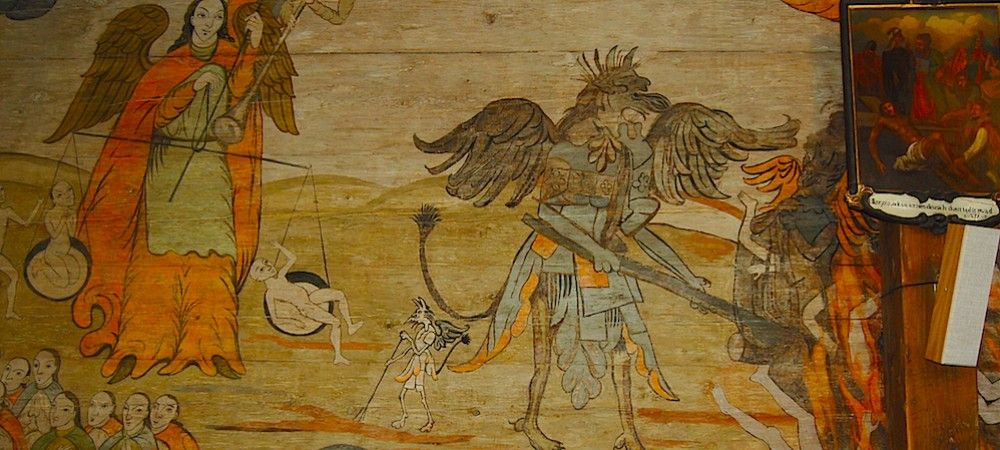
Blizne
Blizne is widely known for its All Saints church, which is a UNESCO World Heritage Site and one of the most appreciated historic buildings in the region.
The village was established, like Krosno, by Casimir III the Great. It belonged to the bishops of Przemyśl, who funded there a wooden church inspired by the church in Haczów around the middle of the 15th century.
In the 17th century, the characteristic bell tower was added to the church. The painting of the adoration of the Mother of God by All Saints in the main altar also comes from that time. It is associated with the royal painter of the Vasa dynasty Tomasso Dolabella from Venice, whose work for the Parish Church in Krosno is widely recognised.
Also the magnificent polychrome paintings which earned the church the place on the UNESCO World Heritage List come from the 17th century. They complement the older paintings – including the striking and much reproduced scene of the Final Judgement from the 16th century.
Most of the paintings were funded by local peasants, and their clear message makes the pictorial decoration of the church in Blizne a model example of a Poor Man's Bible, which served to familiarise with the message of the Bible those members of the congregation who could not read (which means most of them). It is thought the donors may have possessed the art of reading as their names and surnames are placed over the paintings.
The church is a part of the beautifully preserved complex of buildings, comprising the old presbytery from 1699 and buildings from the middle of the 19th century: the granary, old parish school (the organist’s house) and the barn. There is also the building of the old hospital, that is the shelter for poor parishioners from the first half of the 19th century.
On the other side of the road, there is the new, impressive church, where the priceless Gothic wooden sculpture of the Madonna from the beginning of the 16th century can be admired. Its shape was inspired by an Albrecht Dürer print and the precision with which it was created led historians to believe its author must have been one of the elite group of woodcarvers who continued the work of Wit Stwosz in the Małopolska region.
Having visited both churches, it is worth taking a walk up St Michael Mountain, also known simply as “Michałek” (“little Michael”), to see an interesting chapel from 1877. It commemorates the support Michael the Archangel gave to the Blizne peasants, freeing them from Turkish captivity in 1624.
The first chapel was constructed there as early as the 17th century. In the following century, the hill was managed by the Capuchin order from Krosno, but their plan to build a monastery there was thwarted by the policy of Josephinism, when Emperor Joseph II simply abolished the order as he thought it to be idle.
Another order settled in Blizne – sisters of the Community of Our Immaculate Lady of Great Trust. Their convent can be easily seen on the side of the mountain, above the characteristic silhouette of the new church. It is connected to Michałek with the Way of the Cross which starts at the UNESCO site and ends on top of the mountain, near St Michael’s chapel.
See virtual panorama of Michałek
Virtual tour of a church
In the 17th century, the characteristic bell tower was added to the church. The painting of the adoration of the Mother of God by All Saints in the main altar also comes from that time. It is associated with the royal painter of the Vasa dynasty Tomasso Dolabella from Venice, whose work for the Parish Church in Krosno is widely recognised.
Also the magnificent polychrome paintings which earned the church the place on the UNESCO World Heritage List come from the 17th century. They complement the older paintings – including the striking and much reproduced scene of the Final Judgement from the 16th century.
Most of the paintings were funded by local peasants, and their clear message makes the pictorial decoration of the church in Blizne a model example of a Poor Man's Bible, which served to familiarise with the message of the Bible those members of the congregation who could not read (which means most of them). It is thought the donors may have possessed the art of reading as their names and surnames are placed over the paintings.
The church is a part of the beautifully preserved complex of buildings, comprising the old presbytery from 1699 and buildings from the middle of the 19th century: the granary, old parish school (the organist’s house) and the barn. There is also the building of the old hospital, that is the shelter for poor parishioners from the first half of the 19th century.
On the other side of the road, there is the new, impressive church, where the priceless Gothic wooden sculpture of the Madonna from the beginning of the 16th century can be admired. Its shape was inspired by an Albrecht Dürer print and the precision with which it was created led historians to believe its author must have been one of the elite group of woodcarvers who continued the work of Wit Stwosz in the Małopolska region.
Having visited both churches, it is worth taking a walk up St Michael Mountain, also known simply as “Michałek” (“little Michael”), to see an interesting chapel from 1877. It commemorates the support Michael the Archangel gave to the Blizne peasants, freeing them from Turkish captivity in 1624.
The first chapel was constructed there as early as the 17th century. In the following century, the hill was managed by the Capuchin order from Krosno, but their plan to build a monastery there was thwarted by the policy of Josephinism, when Emperor Joseph II simply abolished the order as he thought it to be idle.
Another order settled in Blizne – sisters of the Community of Our Immaculate Lady of Great Trust. Their convent can be easily seen on the side of the mountain, above the characteristic silhouette of the new church. It is connected to Michałek with the Way of the Cross which starts at the UNESCO site and ends on top of the mountain, near St Michael’s chapel.
See virtual panorama of Michałek
Virtual tour of a church
fot.: M. Rymar (1,3,4,5,6), arch. Arete sp. z o.o. (2), panorama: www.blizne.przemyska.pl
